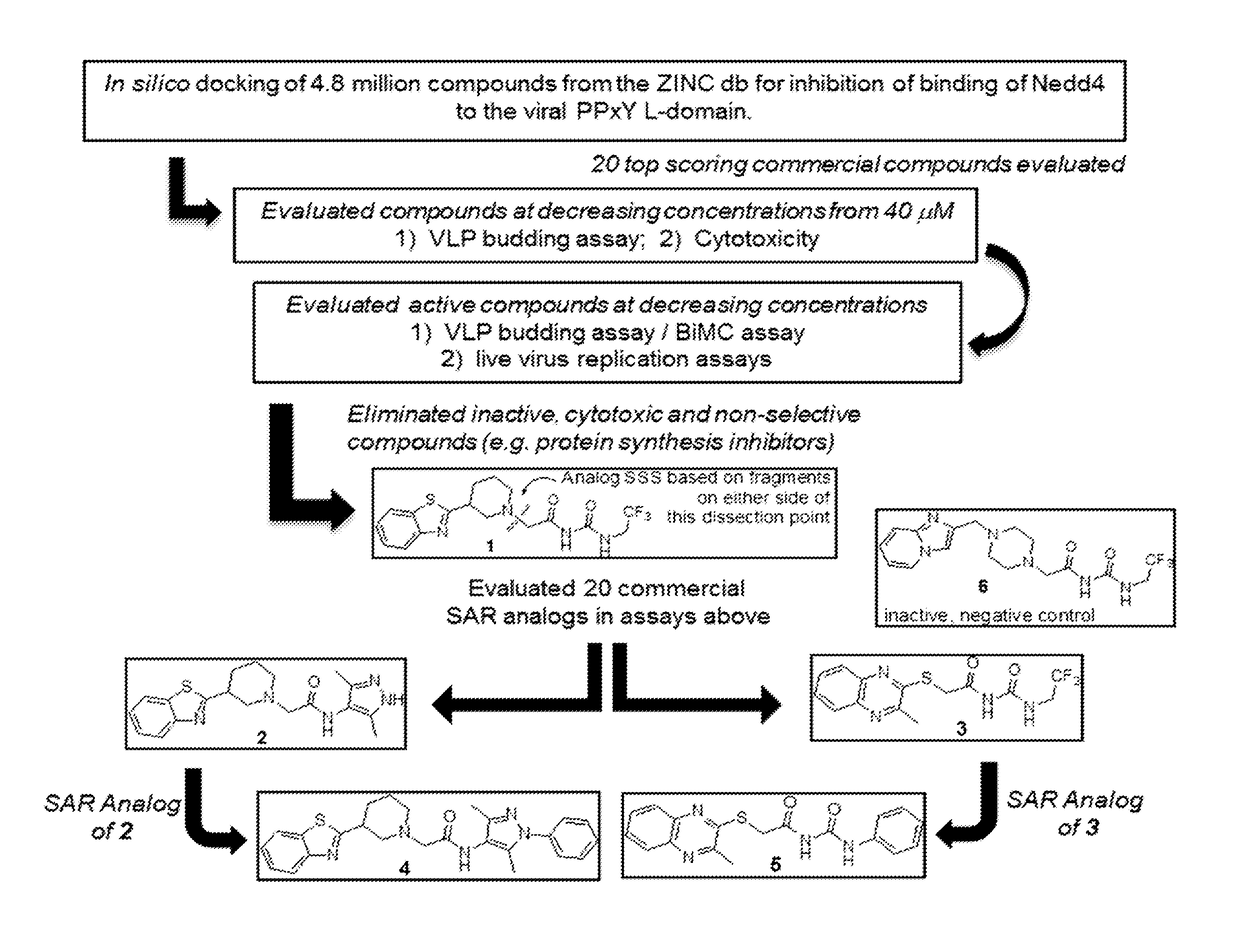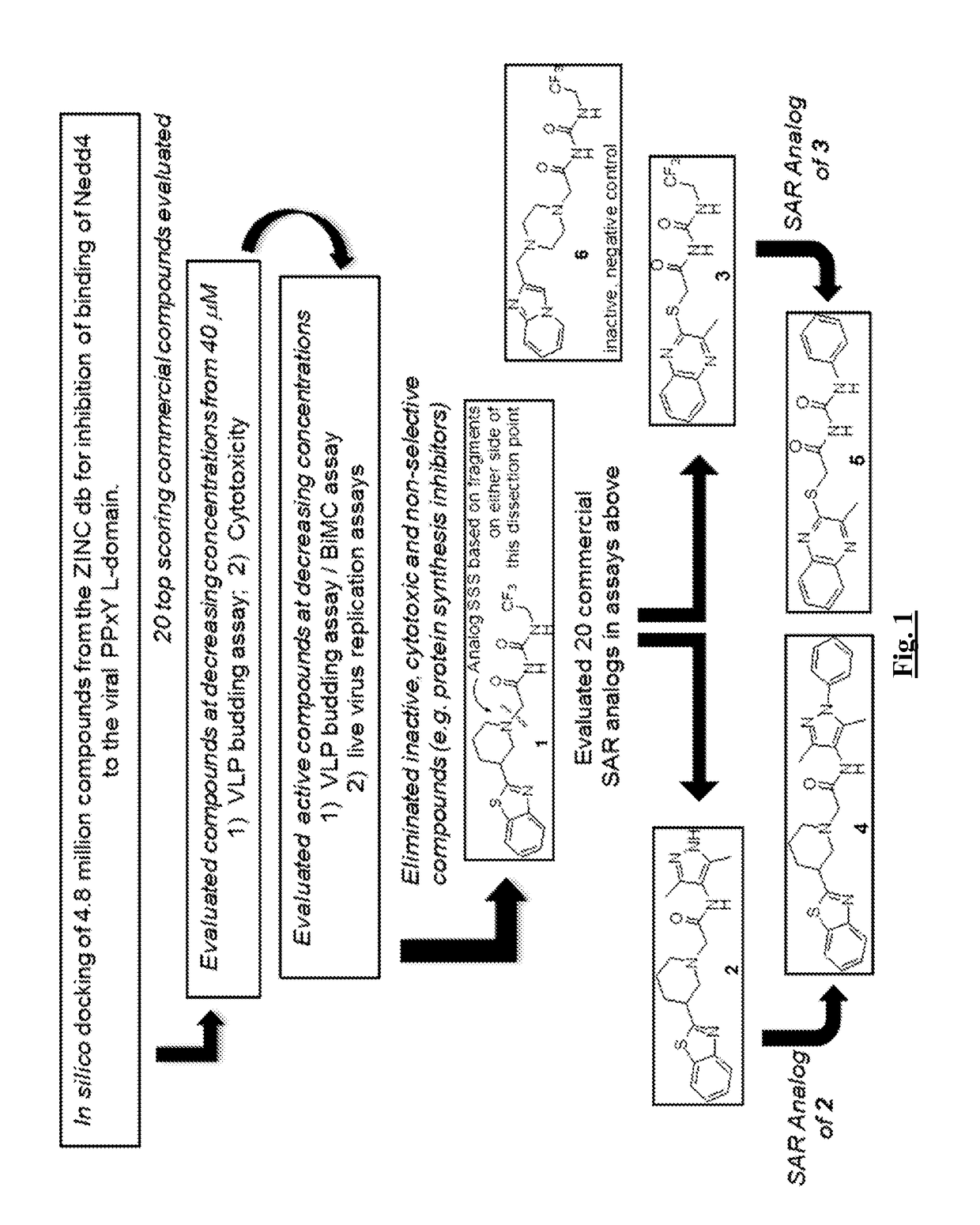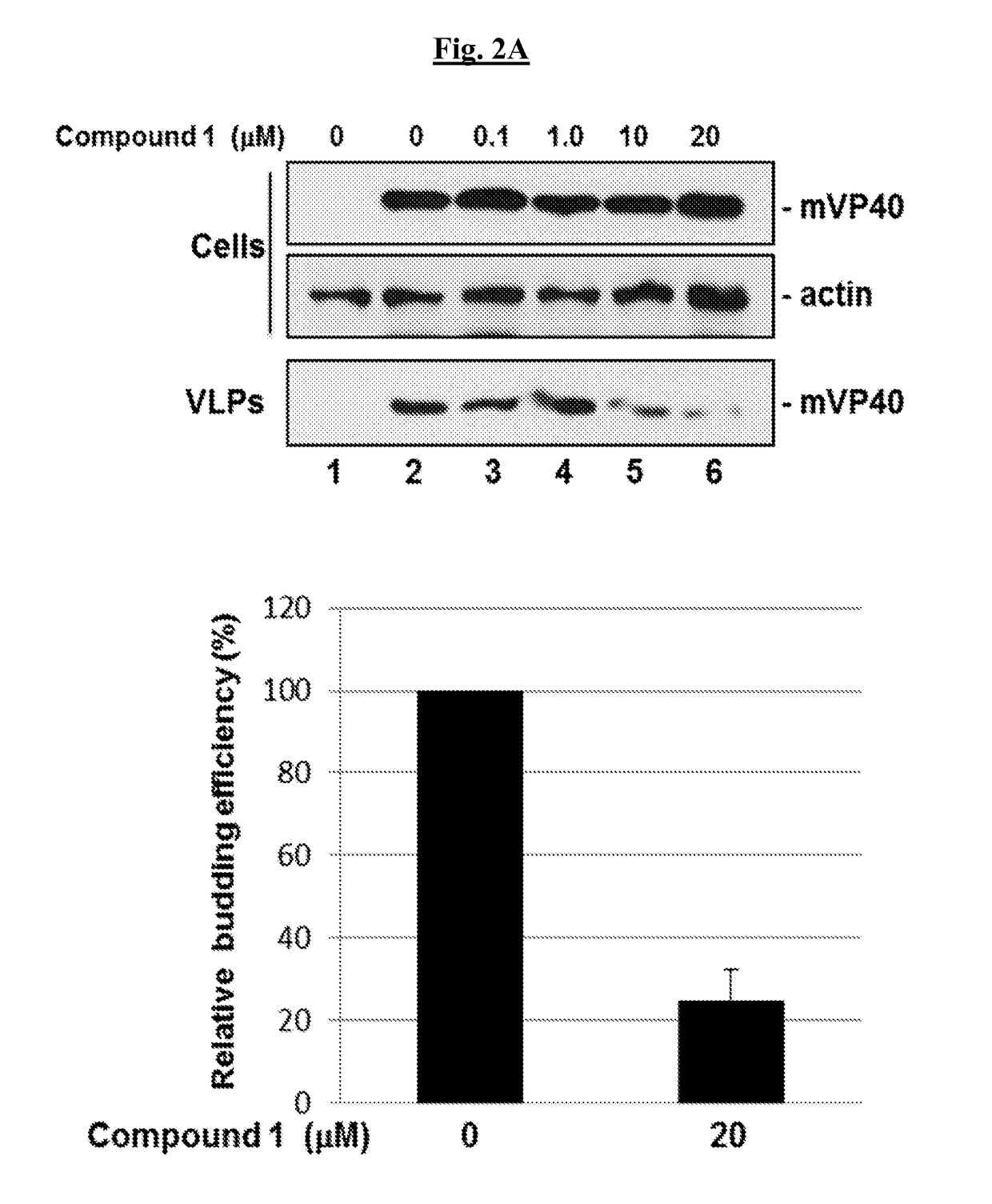Novel antiviral compounds and methods using same
a technology of antiviral compounds and compounds, applied in the field of new antiviral compounds, can solve the problems of low efficacy of fda-approved drugs for treating lvf (ribavirin) in treating the diseas
- Summary
- Abstract
- Description
- Claims
- Application Information
AI Technical Summary
Benefits of technology
Problems solved by technology
Method used
Image
Examples
example 1
Synthesis of Exemplary Compounds
Compound 3h: 2-((3-methylquinoxalin-2-yl)thio)-N-(phenylcarbamoyl)acetamide
[0282]
Compound 3n: 6-(3-Methyl-quinoxalin-2-ylsulfanylmethyl)-1H-pyrimidine-2,4-dione
[0283]
[0284]3-Methylquinoxaline-2-thiol (25 mg, 0.14 mmol), 6-(chloromethyl)uracil (23 mg, 0.14 mmol) and sodium acetate (17 mg, 0.21 mmol) were combined in EtOH (700 μL) and refluxed for 30 minutes. The reaction was cooled, and the solids were collected by vacuum filtration and washed with EtOH, to obtain the title compound as a pink powder (41 mg, 95% yield). LCMS (ESI) m / z 301.4 (M+1)+, retention time 3.4 min. 1H NMR (300 MHz, d6-DMSO) δ 11.1 (br. s., 1H), 11.0 (br. s., 1H), 8.0-7.9 (m, 2H), 7.8-7.7 (m, 2H), 5.7-5.6 (m, 1H), 4.3 (s, 2H), 2.6 (s, 3H).
Compound 5: 1-[2-(3-Methyl-quinoxalin-2-ylsulfanyl)-acetyl]-3-phenyl-urea
[0285]
Step 1: 1-(2-Chloro-acetyl)-3-phenyl-urea
[0286]
[0287]2-Chloroacetylisocyanate (102 μL, 1.2 mmol) was added dropwise to a room temperature stirred solution of aniline h...
example 2
ation of Host-Oriented Inhibitors Targeting Viral PPxY-host Nedd4 Interactions
[0310]In one aspect, subversion of host Nedd4 E3 ubiquitin ligase by viral PPxY-type L-domains plays a role in efficient budding (virus-cell separation) of numerous RNA viruses including filoviruses, arenaviruses, and rhabdoviruses. In certain embodiments, small molecule inhibitors that block this virus-host interaction can reduce virus-cell separation and virus spread by concomitantly increasing the number of virions tethered to the plasma membrane.
[0311]Such candidate small molecule compounds were identified by using an in silico screening strategy to probe the reported interaction structure between the viral PPxY motif and the host WW-domain of Nedd4 (FIG. 1). This approach allowed for the identification of 1 as initial hit. Structural analogs of 1 based on the dissected fragments of 1 (FIG. 1) were evaluated, allowing for the the identification of more potent compounds 2-5 (FIG. 1).
example 3
ing Activity of Compound 1
[0312]Compound 1 was tested for its ability to block PPxY-dependent budding of MARV VP40 (mVP40) VLPs in a dose-dependent manner. Briefly, HEK293T cells were transfected with pCAGGS vector alone (FIG. 2A, lane 1) or an mVP40 expression plasmid in the absence (DMSO alone, lane 2) or presence of the indicated concentrations of 1 (lanes 3-6).
[0313]Compound 1 produced a dose-dependent inhibition of mVP40 VLP formation with an approximate 5-fold decrease in VLP egress at a concentration of 20 μM compared to controls (FIG. 2A; VLPs, lanes 2 and 6; bar graph). Compound 1 had no effect on expression levels of mVP40 or actin in cells at all drug concentrations tested (FIG. 2A; Cells, lanes 1-6).
[0314]Studies were the perfroemd to determine whether 1 could inhibit budding of a PPxY-dependent virus from cell culture. Efficient egress of VSV is dependent on a functional PPxY L-domain within its M protein (Harty et al., 2001, J. Virol. 75:10623-10629; Craven et al., 199...
PUM
| Property | Measurement | Unit |
|---|---|---|
| time | aaaaa | aaaaa |
| time | aaaaa | aaaaa |
| time | aaaaa | aaaaa |
Abstract
Description
Claims
Application Information
 Login to View More
Login to View More - R&D
- Intellectual Property
- Life Sciences
- Materials
- Tech Scout
- Unparalleled Data Quality
- Higher Quality Content
- 60% Fewer Hallucinations
Browse by: Latest US Patents, China's latest patents, Technical Efficacy Thesaurus, Application Domain, Technology Topic, Popular Technical Reports.
© 2025 PatSnap. All rights reserved.Legal|Privacy policy|Modern Slavery Act Transparency Statement|Sitemap|About US| Contact US: help@patsnap.com



